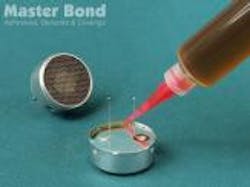EP21LV two-part epoxy conforms to USP Class VI and Title 21, U.S. Code of Federal Regulations, FDA Chapter 1, Section 175.105 requirements. It works from -65 to 250°F and bonds to metals, glass, wood, rubbers, ceramics, and many plastics. It resists thermal cycling, water, oils, fuels, bases, acids, and salts. The epoxy's cured tensile strength is 7,600 psi; its shear strength is over 2,900 psi; and it elongates to 4.8% at 75°F. Its volume resistivity is 1015 ohm-cm, and its coefficient of thermal expansion is 53 in/in x 10-6/°C.
The epoxy mixes at 1:1 by weight or volume, but users can tailor cure rigidity by varying mix ratio. The adhesive has a 60 to 75-min working life and cures at room temperature in 24 to 36 hr or faster at elevated temperatures. It comes in amber-clear and other colors in pint, quart, gallon, and 5-gal kits.
Master Bond Inc., 154 Hobart St., Hackensack, NJ 07601, (201) 343-8983, www.masterbond.com
About the Author
Jessica Shapiro
Jessica serves as Associate Editor - 3 years service, M.S. Mechanical Engineering, Drexel University.
Work experience: Materials engineer, The Boeing Company; Primary editor for mechanical and fastening & joining.
